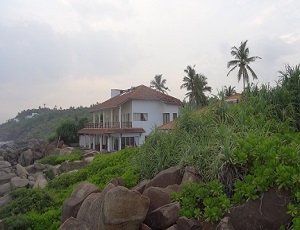
Property investments such as this one by Dezan Shira & Associates are a good way to retain key partners, as well as provide retirement planning both as a capital investment and rental income. Several Asian firms are now reinvesting in property investment vehicles to attract and retain high quality personnel.
Although there are plenty of new, young practices now commencing life throughout Asia, the original old guard of law and tax partners, and especially those in China, are now nearing or are at retirement age. While many will be protected by their own firms’ schemes, personal investments and mandatory pension fund contributions, many smaller practices – some of which are now substantial businesses – may not have put those safety net measures in place, or may only now be thinking about doing so.
With an overall trend of partners now retiring at younger ages – the recommended retirement age for expatriate partners is now 55 – this means that, coupled with fast growth rates across Asia, partner level employees should have become personally financially independent by this age.
Assuming a partner level position is achieved by age 40, this requires an estimated US$15 million of income for an average partner over the next fifteen years – a combined annual salary and dividend package of at least US$1 million. Comparisons with other firms across Asia suggest that practices achieving annual turnovers in excess of US$10 million per annum – a relatively low threshold – should be looking to implement these levels of partner income. If not, then one of two situations apply: either there is significant reinvestment by partners into the practice – a positive element – or one or more partners are simply not productive enough and are taking too much capital out of the business.
 RELATED: Business Advisory Services from Dezan Shira & Associates
RELATED: Business Advisory Services from Dezan Shira & Associates
However, there are other schemes that can also be employed. Apart from the major cities, Asia represents very good value in the property market. While interest rates remain low, and are likely to continue to do so, property investment schemes can also be implemented and used as incentives for partners.
Dezan Shira & Associates have left the responsibility for investing personal wealth to individual partners. However, it has also established a property investment company owned by the equity partners. This has recently made an acquisition in a resort in Asia. This was considered a better longer term investment than leaving the capital in bank accounts. In fact, the property value has already realized a return of asset value in excess of 20 percent over the past 18 months, far higher than that attainable from bank investments.
In discussing similar issues with partners of other Asian firms, investment by partners into luxury villas and boutique hotels in Asia appears to be a trend. Investment hot spots at present in this field include Lombok, the island adjacent to Bali in Indonesia, other eastern Indonesian islands, Sri Lanka, and the east coast of Malaysia. 50 percent of firms within the Dezan Shira Asian Alliance have already instigated such schemes.
While it is true that many new firms in Asia are still at a development stage, the message is clear – partners should be capable of generating enough profits to justify a US$1 million annual package. Opportunities exist, particularly in Asia, for firms to establish investment vehicles to which partners or other key personnel can subscribe in order to further incentivize productivity, keeping them within the firm and assisting with plans for future partner retirement.
|
Chris can be followed on Twitter at @CDE_Asia. Stay up to date with the latest business and investment trends in Asia by subscribing to our complimentary update service featuring news, commentary and regulatory insight.
|
![]()
The 2015 Asia Tax Comparator
In this issue, we compare and contrast the most relevant tax laws applicable for businesses with a presence in Asia. We analyze the different tax rates of 13 jurisdictions in the region, including India, China, Hong Kong, and the 10 member states of ASEAN. We also take a look at some of the most important compliance issues that businesses should be aware of, and conclude by discussing some of the most important tax and finance concerns companies will face when entering Asia.
 The Gateway to ASEAN: Singapore Holding Companies
The Gateway to ASEAN: Singapore Holding Companies
In this issue of Asia Briefing Magazine, we highlight and explore Singapore’s position as a holding company location for outbound investment, most notably for companies seeking to enter ASEAN and other emerging markets in Asia. We explore the numerous FTAs, DTAs and tax incentive programs that make Singapore the preeminent destination for holding companies in Southeast Asia.
 An Introduction to Tax Treaties Throughout Asia
An Introduction to Tax Treaties Throughout Asia
In this issue of Asia Briefing Magazine, we take a look at the various types of trade and tax treaties that exist between Asian nations. These include bilateral investment treaties, double tax treaties and free trade agreements – all of which directly affect businesses operating in Asia.



